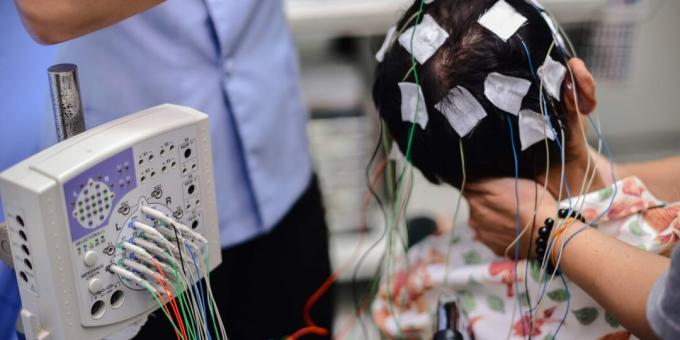What is EEG and why should it be done
Miscellaneous / / August 01, 2021
With its help, brain diseases are diagnosed.
What is EEG
EEGEEG / U.S. National Library of Medicine, or electroencephalogram, is a method of studying the electrical activity of the brain. Special electrodes are fixed on the scalp, which register different types of signals and record them in the form of waves.

Who is EEG done?
It can be prescribed by a neurologist to a person with suspected one of the following diseasesEEG (electroencephalogram) / Mayo Clinic:
- epilepsy;
- head injury;
- encephalitis, or inflammation of the brain;
- stroke;
- sleep disturbances such as apnea;
- brain tumors;
- encephalopathy, or deterioration in brain function that can occur for a variety of reasons.
What is EEG
There are several typesElectroencephalogram (EEG) / NHS:
Regular
Lasts 20-40 minutes. A person lies calmly, sometimes he is asked to open or close his eyes, to take several deep breaths and exhalations. At the end of the procedure, a blinking lamp may be placed near the patient to study the brain's response to light.
Sleep EEG
The technique differs in that while the doctor registers the brain impulses, the person must sleep. This is done to study how the phases of sleep change and whether there are disturbances in them. The duration of the procedure is several hours.
Outpatient
The compact recorder is attached to clothing to record brain activity over a period of 24 hours or more. During this time, a person can go about their daily activities. An outpatient EEG is done to determine the causes of epileptic seizures or to evaluate the effectiveness of the treatment used, and also before brain surgery.
Video ‑ EEG
Sensors are attached to the head, and the person spends several days in a special ward with video surveillance. The doctor can see how the patient is behaving, and so get more information about his brain.
How to prepare for an electroencephalogram
On the eve of the study, you needEEG / U.S. National Library of Medicine Wash your hair, but do not use conditioner, gel, wax, or other products. This can impair signal transmission.
You need to tell your doctor in advance what medications you are taking. It may be necessary to stop using certain drugs for a while. But you cannot cancel the treatment yourself.
Caffeinated drinks should be avoided eight hours before the study.
If sleep EEG is performed, the doctor may suggest going to bed later or getting up earlier.
How is EEG performed
The procedure is completely painless. First, the doctor's assistant measuresEEG (electroencephalogram) / Mayo Clinic the head of a person and applies marks on the skin with a special pencil. Sometimes these areas are additionally cleared of sweat and sebum. Then, using glue, electrodes are attached to the prepared points or an elastic cap with sensors located on it is put on.
If this is an ordinary study or in a dream, then after connecting to the device, the person should lie down comfortably and close his eyes. In other cases, there is no need to limit activity.
What will happen after the EEG
When the study is completed, the electrodes will be removed from the head, and the person will return to their usual life. If the EEG was performed during sleep, the patient will be awakened. ResultEEG (electroencephalogram) / Mayo Clinic diagnostics are not given immediately. The doctor will need time to decipher the recording. Usually the test is ready the next day.
The conclusion should be referred to the doctor who ordered the examination. And the specialist will already decide whether the diagnosis has been confirmed and what kind of treatment is needed.
Read also🧐
- 5 tips to keep your brain young
- Why exercise is needed not only for your body, but also for your brain
- How stress and worry physically change our brains
- 10 Brain Tumor Symptoms Everyone Should Know
- 3 simple tips to keep your brain young and healthy
Scientists talk about dozens of COVID-19 symptoms that can persist for more than 6 months
Scientists have named the characteristic symptoms of the delta strain of coronavirus. They are different from the usual COVID-19



